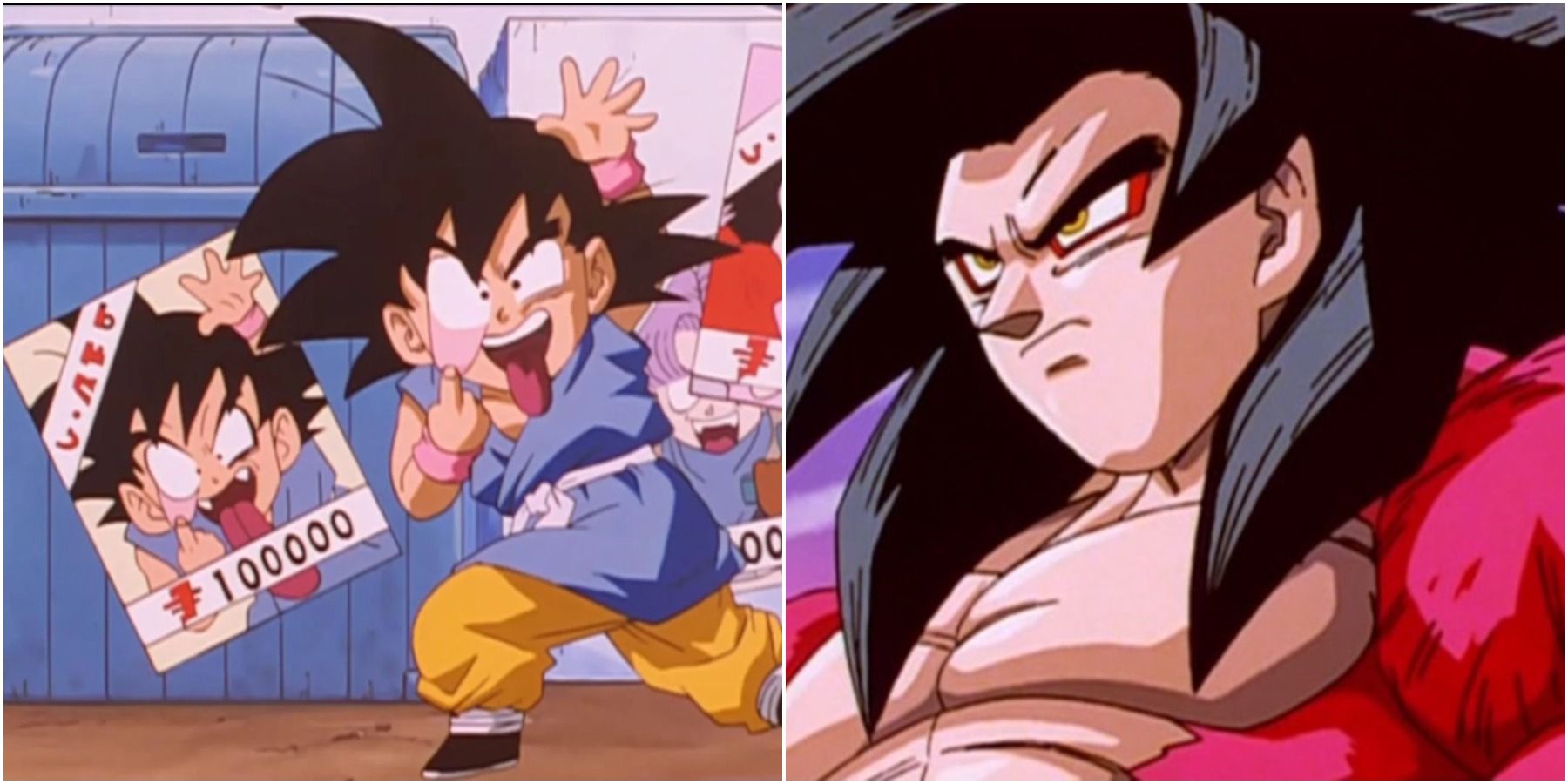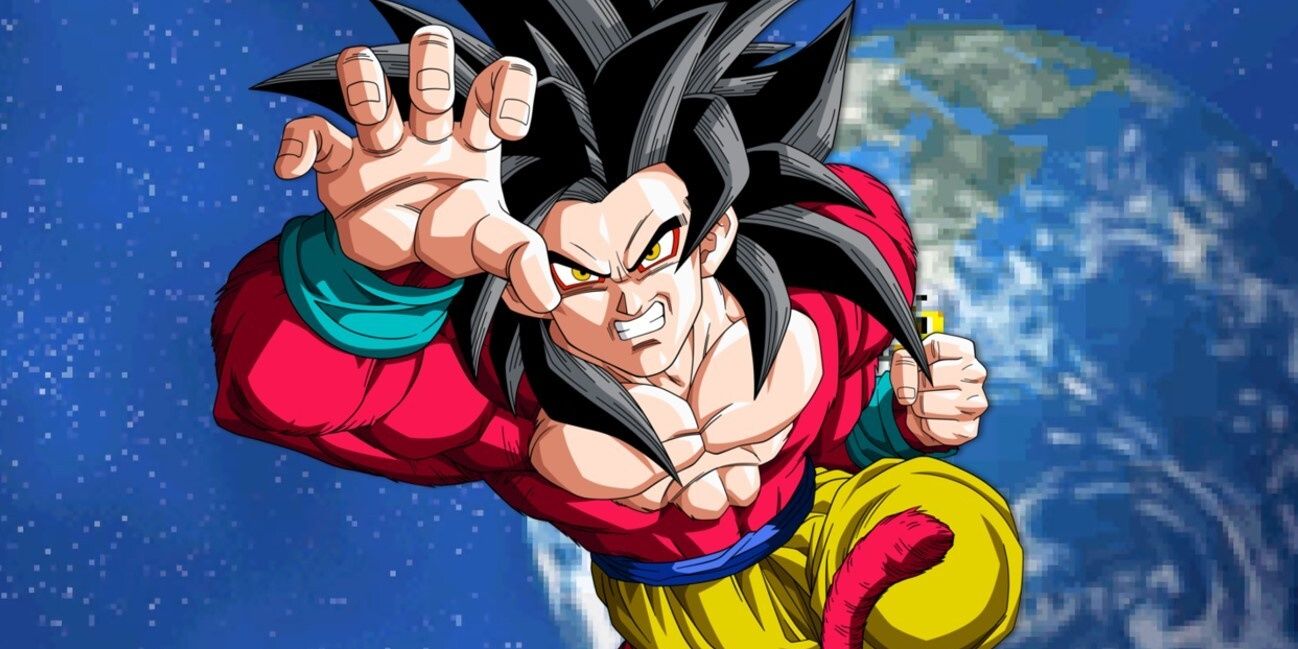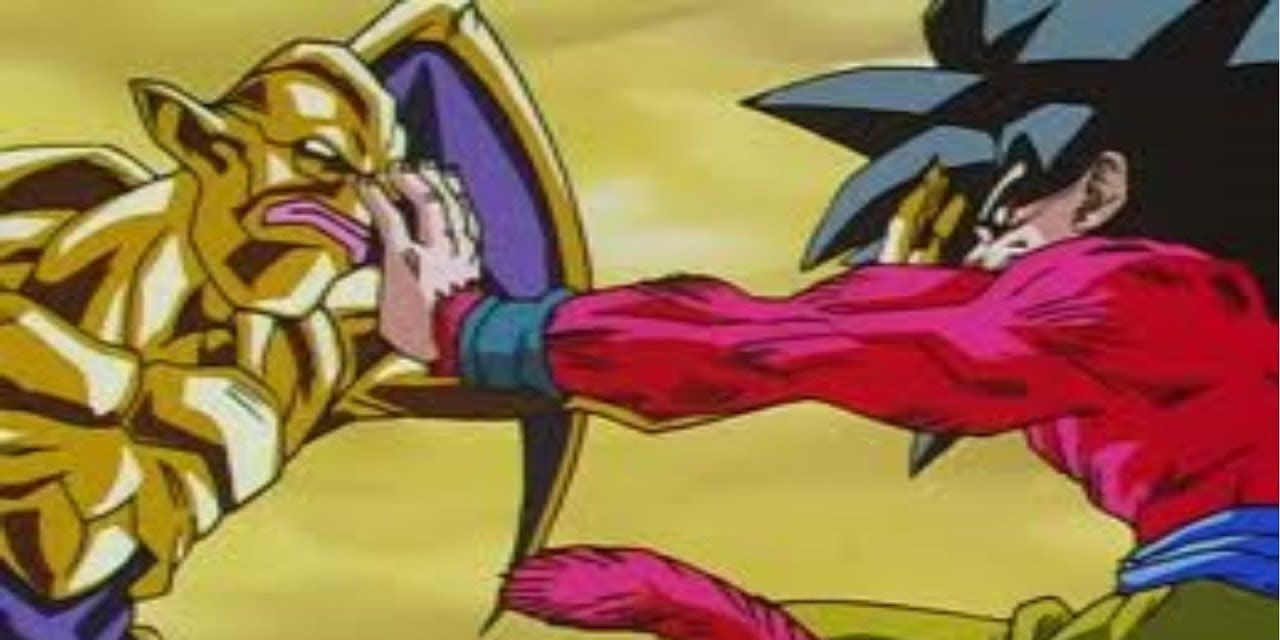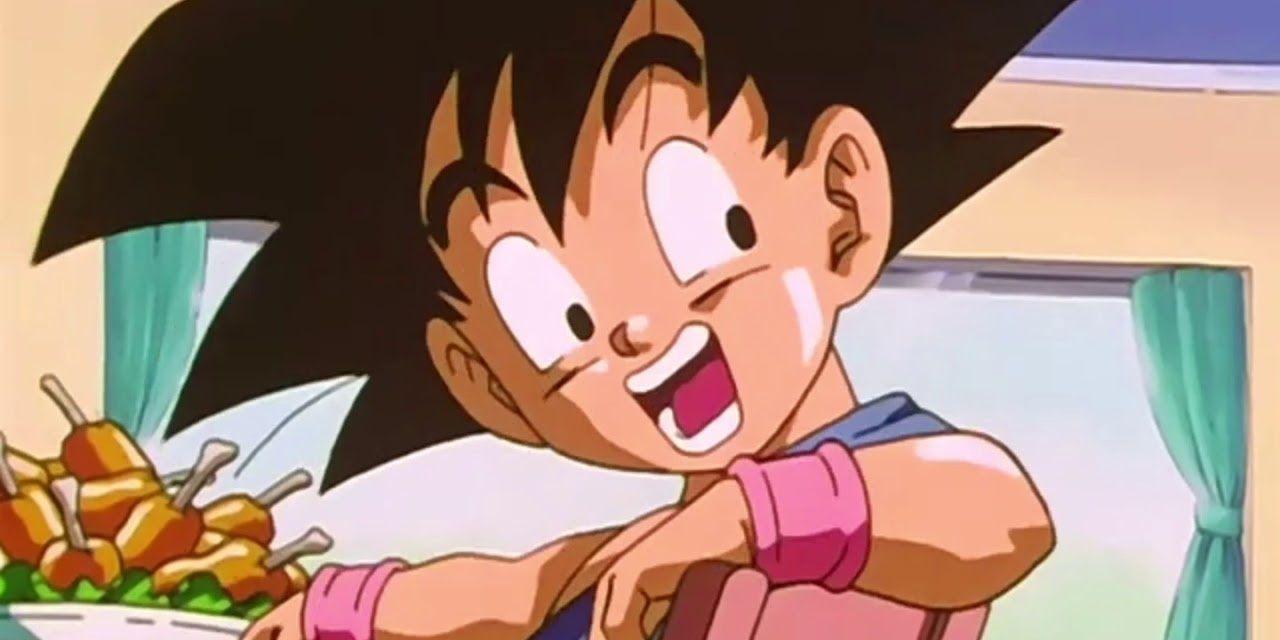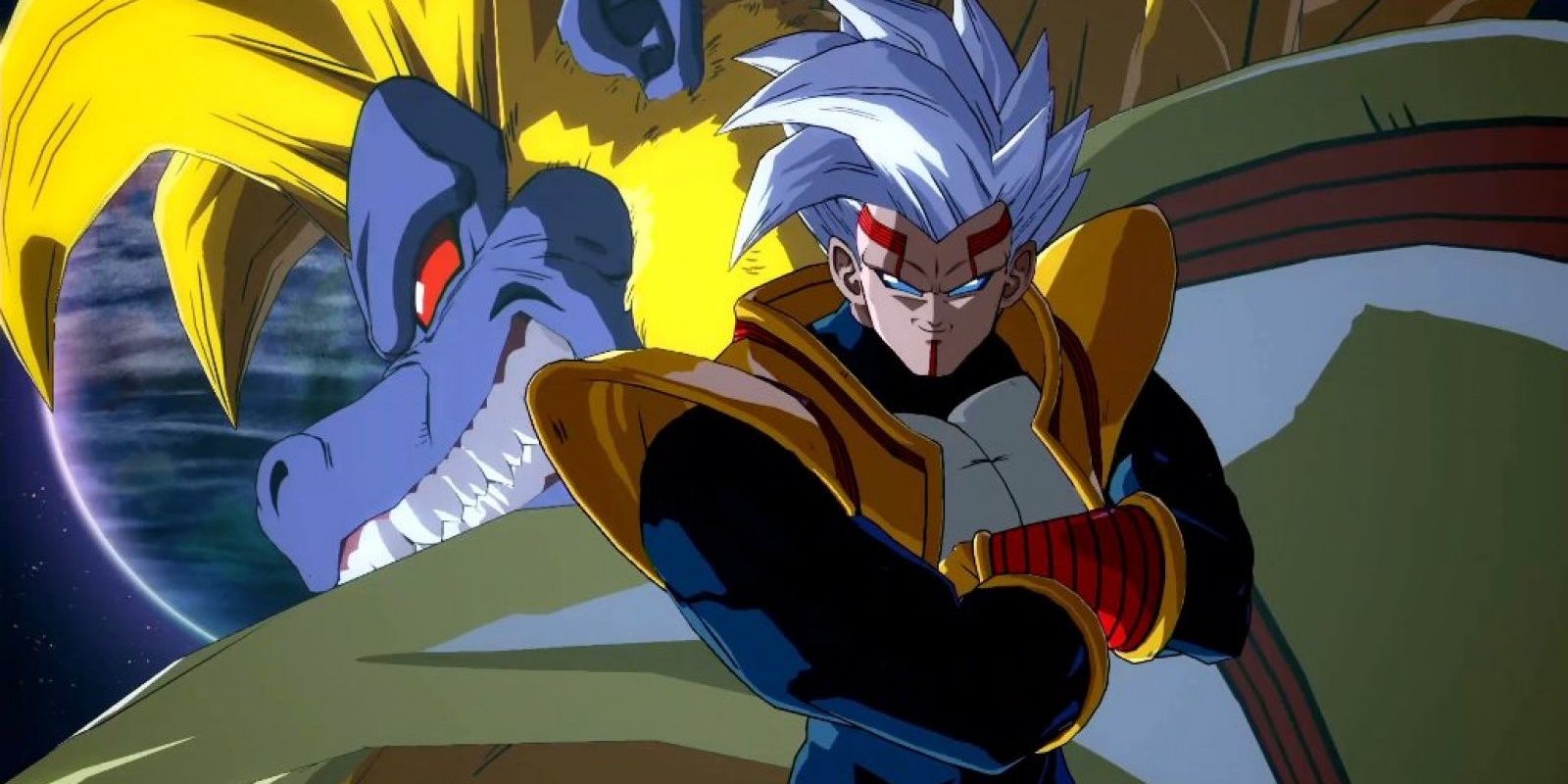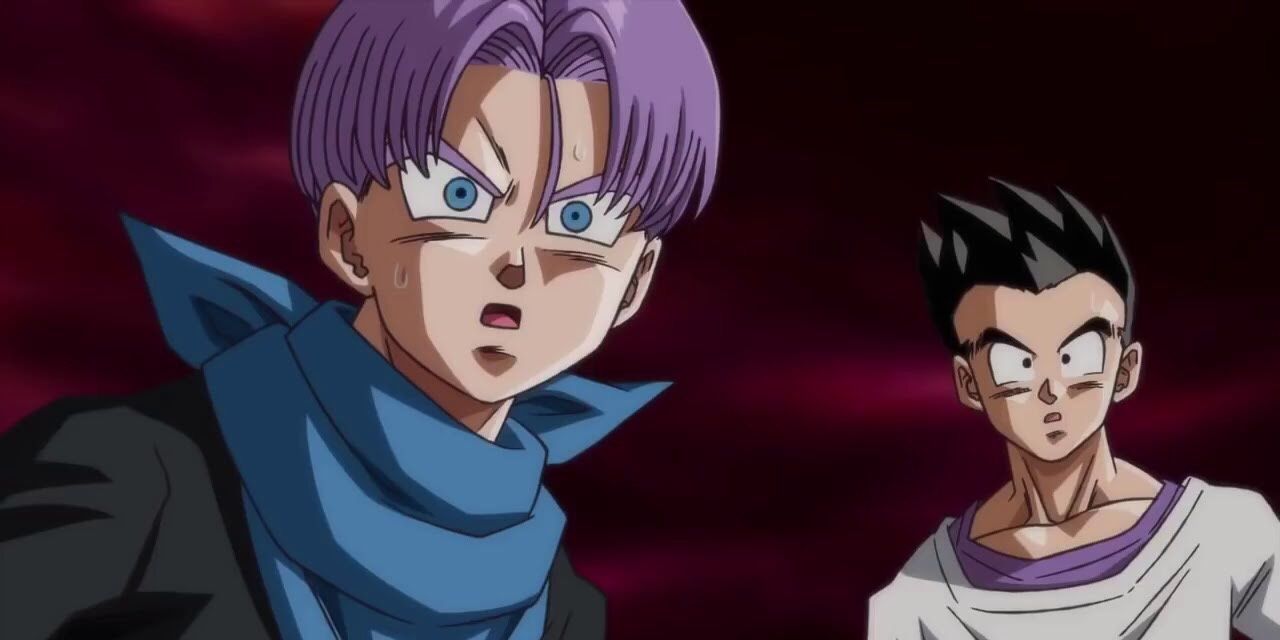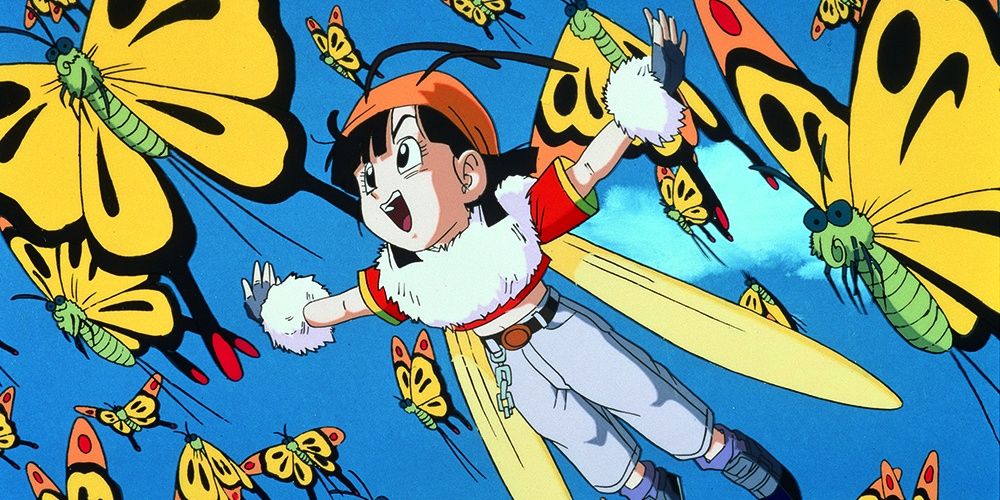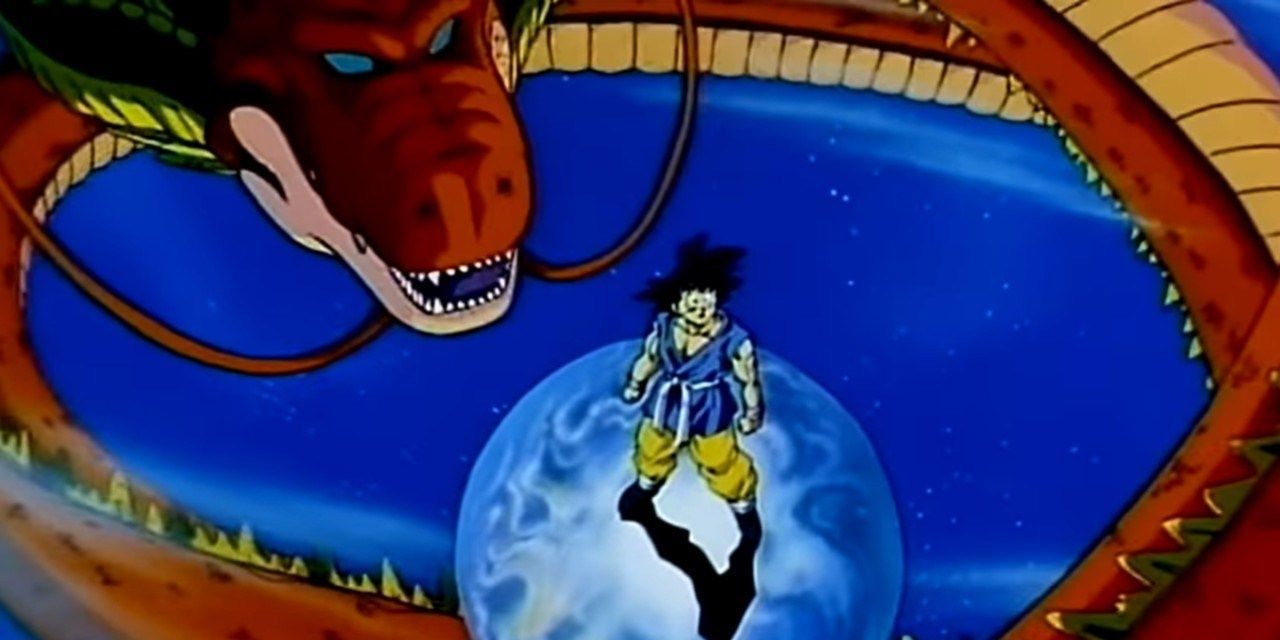Dragon Ball GT has long been the black sheep of the Dragon Ball franchise. It wasn't based on a manga by creator Akira Toriyama, and fans didn't like many of the creative decisions thereafter. After Toriyama returned to help craft his own sequel series in Dragon Ball Super, it effectively erased GT from canon. That doesn't mean fans should forget it, though.
GT did many things worth admiring in terms of character, craft, and creativity. These pros are all the more apparent after witnessing the flaws of Super. Hindsight can be extremely flattering, especially when a modern alternative leaves audiences wanting.
7 Super Saiyan 4
This show came with its own contribution to Goku's ever-expanding list of forms, and it immediately turned heads. Super Saiyan 4 is a radical departure from all previous Super Saiyan levels. In place of blonde hair, it lengthens the black locks of the base form. It also forgoes a shirt in favor of red fur and a tail of the same color. It doesn't even look like it belongs in the same family as the other forms.
That's what makes this transformation so great. Super Saiyan 4 is meant to be different, evidenced by the Great Ape ability as a prerequisite. Both in conditions and design, it harkens back to the Saiyans' primal roots and brings their aesthetic development full circle. Needless to say, that's more memorable than the simple color palette swaps of Dragon Ball Super's transformations.
6 Animation
As ugly as GT is at points, the animation is consistent throughout. The battles remain fairly fluid, and characters rarely fall victim to awkward stiffness even outside of combat. Granted, the show doesn't attain anything exceptional with its visuals. However, it also never takes massive dips in quality.
Dragon Ball Super, on the other hand, looks downright terrible at the start. The movements here are lifeless and amateurish. The upside is that the creatives come into their own, meaning that the animation reaches amazing heights later on. Still, viewers have to soldier through the growing pains to get there. GT doesn't have that adjustment period, so audiences likely won't experience that initial gag reflex.
5 Goku's Character
A common complaint about Goku these days is that he's lost what few brain cells he had, regressing to the mindset of a child. Ironically, GT actually makes him a child, but he acts more like an adult.
His characterization feels like a natural progression from the previous shows. He's still a lighthearted guy who loves fighting, but he's also gained the maturity that comes with experience and raising a family. He can read people and be there for those he loves, both physically and emotionally. Most importantly, he doesn't break into laughing fits every two seconds. Without that advancement, what's the point of Goku growing up in the first place?
4 A Creative Villain
Most of GT's villains are nothing to write home about, but the show starts out strong with its first major baddie: the machine-mutant known as Baby. Stupid name aside, he actually has an intriguing dynamic with the characters. Baby is a member of the scientifically advanced Tuffles. In ages past, the Saiyans wiped out this race and took their technology for themselves. Considering many of the characters have Saiyan blood, Baby comes to Earth seeking retribution. He then possesses their minds to solidify his regime and create a new Tuffle planet.
That's more inspired than any villain from Dragon Ball Super (with the possible exception of Zamasu). Not only does Baby have a compelling motivation, but he forces the heroes to fight against their loved ones. This creates an eerie sense of isolation rarely seen in the franchise.
3 Goten & Trunks
The series has always struggled with what to do with these kids. As the youngest heroes, they mostly mess around in the background until they're needed for a fight. That need is increasingly rare since several other characters are far more powerful. As such, the writers just relegate them to comic relief, and they're scared to grow the boys up because of that.
Following the epilogue of Dragon Ball Z, GT doesn't have that option. As a result, the show lets them move into adulthood. Goten is dating girls, and Trunks is running Capsule Corp. In the latter's case, he also tries to keep the mission on task when thrust into the galactic Dragon Ball hunt. Giving them something beyond juvenile antics affords them more agency and dimension without sacrificing their familiar dynamic. They still have plenty of friendly banter whenever they're together. It's the best of both worlds.
2 Less Filler
Standing at 64 episodes, GT is the shortest Dragon Ball series. Part of that comes down to having only three major arcs, but the creators also aren't stuck waiting for Toriyama to finish the manga. Thus, the show has less need for filler.
Few episodes in GT exist simply to fill time. They still pop up on occasion, like during the heroes' space exploits or the Super Android 17 saga, but most chapters focus only on the main plot. Some fans like the novelty and character-building antics of the filler episodes, but those who don't will appreciate the more concise storytelling here.
1 Music
Many Dragon Ball products, especially more recent ones, have a problem with music. Namely, the soundtracks are so silly and bubbly that they sound straight out of a circus. The creators clearly want to convey the spirit of adventure, but there is such a thing as going too far with the whimsy.
GT never has that problem. Whether it's the somber beauty of the original score or Mark Menza's hard rock tracks on the English dub, each version works in its own way. More importantly, they both hammer home the bittersweet atmosphere and intense edge.

